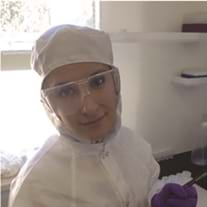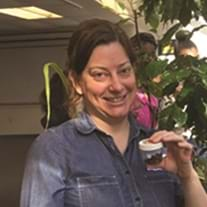A Partnership Between Teachers and Scientists
Studies have continually shown that young people who are exposed to science through active, inquiry-based learning are more likely to pursue a STEM career. And one of the most effective ways to engage students in this type of learning is to give them the opportunity to conduct genuine scientific research with a real scientist!
Created in cooperation with the New York City Department of Education in 2012, the Scientist-in-Residence (SiR) program matches scientists with NYC public school teachers to bring scientific inquiry to life in the classroom. By combining their content and pedagogical expertise, each scientist-teacher pair will develop and implement a year-long project that prepares students to engage in authentic research and spark their interest in STEM learning.
Our Impact
Since our launch, we have paired over 300 teachers and scientists, and impacted 17,000+ students! Check out the map below to see some of the schools where we’ve put a Scientist-in-Residence.
Check out highlights from our May 2023 SiR Student Showcase:
Why should you become a Scientist-in-Residence?
If you are a graduate student, postdoc or STEM professional and want to make a difference in the lives of students in the NYC area, then this program is for you! We’ll match you with a motivated STEM teacher and together you’ll create a hands-on, research based project for your students to work on throughout the year.
By serving as a role model and an example of a real-world scientist, you can inspire curiosity and excitement about STEM topics, and positively influence the career aspirations of students from underserved communities. Through the program, you’ll receive training and hands-on experience in teaching methods and strategies, and get the chance to develop your own mentorship skills.
Need more incentive? Accepted scientists will also receive a stipend and a yearlong Membership to the New York Academy of Sciences!
Important Dates for 2024 – 2025:
- June 14: Applications deadline (note: all applications are reviewed on a rolling basis and qualified applicants will be contacted for a phone interview)
- July 26: Accepted applicants notified
Mandatory events:
- August 9: Scientist Orientation (virtual; scientists only)
- August 24: Summer Institute Orientation A (in-person; grades 2-8 only)
- August 25: Summer Institute Orientation B (in-person; grades 9-12 only)
- October 21: Fall Planning Session (virtual; all participants)
- January 28: Winter Planning Session A (in-person; grades 2-8 only)
- January 30: Winter Planning Session B (in-person; grades 9-12 only)
- May TBD: Student Showcase (time and location TBD)
It was exciting for me to see the enthusiasm of students when we first gave them their [laser thermometers]. We spent time on the school roof taking temperatures and learning how to best record data. I think the active nature of this exercise really helped students stay engaged.
—Scientist Participant, SiR 2022-23
Frequently Asked Questions
How much time is involved?
- The program year runs from approximately Sept – May, during which time each SiR team will schedule at least 10 sessions for the scientist to visit the classroom.
- Scientists and teachers will also meet outside of class time to develop their project and teaching as needed.
- Scientists will attend training sessions (both virtual and in-person) in August as well as a planning session in October and January (see timeline above for more details).
- All participants should also plan on attending the End-of-Program Celebration in May.
What are my responsibilities as a Scientist-in-Residence?
- Specific responsibilities will differ depending on the circumstances of each teacher and classroom. At a minimum, scientists will collaborate with the teachers to develop a research project, supervise experiments, and support classroom instruction on project design and implementation, and in creating a final presentation
- Teams will be asked to submit regular progress reports and check in with the Program Manager as needed.
How much is the scientist stipend and will I be reimbursed for anything else?
- Each SiR team will have a $500 budget for their project materials
- Upon completion of the program, participants will receive a stipend of $500. Limited travel reimbursements are also available for scientists to support travel to schools.
- All participants will also receive a complimentary Membership to the New York Academy of Sciences
Note: All participants will be required to complete necessary tax forms prior to receiving a stipend.
Who is eligible to apply?
Qualified Scientists are:
- Graduate students, postdocs, or professionals from STEM disciplines who are interested in improving their pedagogical and communication skills and expanding their teaching experience
- Located within commuting distance of New York City and/or willing to travel within the five boroughs
- Available and committed to attend all trainings and meetings
How do I apply?
- Applications are open from approximately May – June each year
- Prior to entering schools, all applicants are subject to a background check, administered by the Department of Education and the Department of Health (at no cost to the scientist).
Why should you become a SiR Host Teacher?
By becoming a Scientist-in-Residence Host Teacher you’ll have the chance to bring a real Scientist into your classroom to help motivate and inspire your students. Together, you and your partner will develop an inquiry-based project that encourages students to think critically using the scientific method, while also expanding your repertoire of replicable STEM lesson plans. Host Teachers in past cohorts have reported higher engagement with their students and the added benefit of updating their curricula to incorporate current scientific topics and methodologies.
Need more incentive? Accepted teachers will also receive a stipend and a yearlong Membership to the New York Academy of Sciences!
Important Dates for 2024 – 2025:
- June 14: Applications deadline (note: all applications are reviewed on a rolling basis and qualified applicants will be contacted for a phone interview)
- July 26: Accepted applicants notified
Mandatory events:
- August 9: Scientist Orientation (virtual; scientists only)
- August 24: Summer Institute Orientation A (in-person; grades 2-8 only)
- August 25: Summer Institute Orientation B (in-person; grades 9-12 only)
- October 21: Fall Planning Session (virtual; all participants)
- January 28: Winter Planning Session A (in-person; grades 2-8 only)
- January 30: Winter Planning Session B (in-person; grades 9-12 only)
- May TBD: Student Showcase (time and location TBD)
I got to enhance our Human Body System unit, which felt a bit dense and abstract for our students last year. I’m excited to introduce it through the lens of neuroscience thanks to the partnership with our scientist.
—Teacher Participant, SiR 2022-23
Frequently Asked Questions
How much time is involved?
- The program year runs from approximately Sept – May, during which time each SiR team will schedule at least 10 sessions for the scientist to visit the classroom.
- Scientists and teachers will also meet outside of class time to develop their project and teaching as needed.
- Teachers will attend an in-person training session in August, as well as a planning sessions in October and January (see above timeline for more details)
- All participants should also plan on attending the End-of-Program Celebration in May with representatives from their class.
What is my responsibility as a SiR Host Teacher?
- Prior to the scientist’s first visit, Host Teachers will prepare students and the school for the implementation of the Scientist-in-Residence program.
- Teachers will collaborate with their partner scientist to ensure the project and related activities are aligned with STEM standards and provide support in classroom management and content delivery
- Teachers will coordinate the attendance and participation of students in our End-of-Program showcase
- Teams will also be asked to submit regular progress reports and check in with the Program Manager as needed.
How much is the teacher stipend and will I be reimbursed for anything else?
- Each SiR team will have a $500 budget for their project materials and supplies
- Upon completion of the program, participants will receive a stipend of $500.
- All participants will also receive a complimentary membership to the New York Academy of Sciences
Note: All participants will be required to complete necessary tax forms prior receiving a stipend.
Who is eligible to apply?
Qualified Host Teachers are:
- New York City public/charter school science teachers in grades 2-12, who are interested in implementing a year-long STEM project and welcoming a scientist into their classroom
- Have at least 1 full year of teaching experience
- Available and committed to attend all trainings and meetings
- Dedicated teachers who are open to continuing the project or implementing it with different cohorts of students after the program
How do I apply?
- Applications are open from approximately May – June each year
SiR is possible because of generous support from our program sponsors:
Fred J. Brotherton Charitable Foundation
Peter and Carmen Lucia Buck Foundation, Inc.
The Carson Family Charitable Trust
Robert Catell
Equinor
Foundation for the National Institutes of Health
Hearst Foundation
Infosys Foundation USA
Konstantin Shakhnovich
R. May Lee and John P. Hall
Mushett Family Foundation
Edith Neimark
The Pinkerton Foundation
Click here to find out how your organization can help support programs like this!
Contact Us
For more information, contact Rea Ruiz, Education Program Coordinator, at rruiz@nyas.org.



